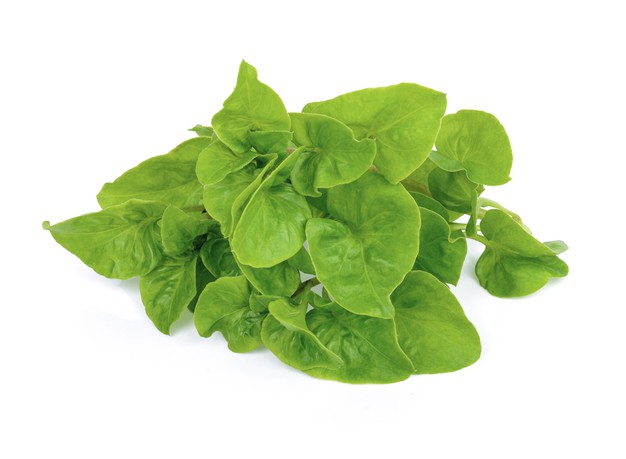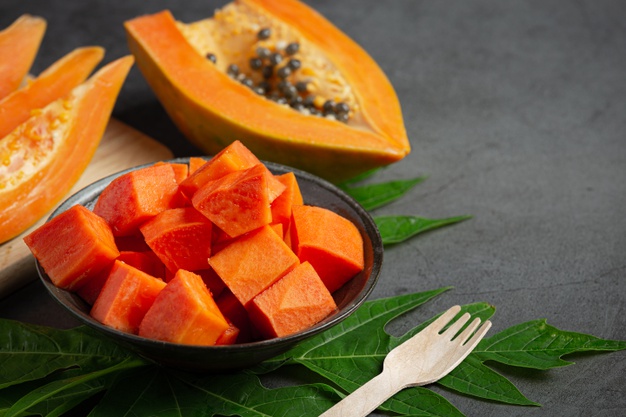Fig also known as anjeer is a nutritious fruit of ficus tree belongs to mulberry family. Fig and its leaf contain numerous imperative nutrients that offer several therapeutic advantages.
General information regarding fig
- Fig is considered as a soft fruit
- It contains this skin
- The colour of the skin is green or purple and the flesh is red in colour
- Fresh fig is generally soft in texture and contains a crunchy seed whereas in dry fig, seed becomes crispier and the flesh also dries up
- It is sweet is taste
Nutritional composition
- It contains lesser amount of carbohydrate
- It also contains dietary fibre
- It is considered as very poor source of proteins and fats
- It provides lesser amount of calories on its oxidation. Mainly the calorie comes from its carbohydrate content especially from its simple sugar content and dry fig contains relatively higher amount of calories than fresh and perishable fig
- It is loaded with various imperative micronutrients like Vitamin A, Vitamin K, Vitamin C, Vitamin B1, B2, B3, B6, choline, calcium, copper, iron, magnesium, sodium and potassium
- It also contains numerous polyphenolic components that exert strong antioxidant, anti-inflammatory, anti-carcinogenic, cell protective and fat lowering activities

Health benefits
Role on digestive health
- Fibre content of fig makes it an important therapeutic substance for digestive system
- It has been traditionally used as an imperative remedial action for constipation as its fibre content especially soluble fibre contents help in enhancing stool bulkiness, softness and bowel movement, which help in easy defecation. It is better to consume 2 to 3 dry figs in empty stomach for improving the symptoms of constipation
- On the other hand it also acts as prebiotic and improves the health of intestinal beneficial microbes hence promotes gut health
- It helps to improve colonic health as well
- It is also very effective for decreasing the prevalence of irritable bowel syndrome, stomach cramping and bloating

Role on reproductive health
- It has been traditionally used for improving reproductive health as it has strong aphrodisiac activity. It is also loaded with various important micronutrients that also play significant role in promoting reproductive health in both genders
- According to Greek, fig is considered as a symbol of love and fertility
- It helps to improve the symptoms of PMS among women and its fibre content as well as antioxidant activities are accountable for decreasing the prevalence of post menopausal hormonal imbalances and breast cancers
- It helps to prevent erectile dysfunction as well
- Its high iron content plays vital role in promoting ovulation in females and also enhances sperm quality and motility in males as a result helps to support fertility
- It is better to consume fig with milk for obtaining a healthy reproductive system

Role on weight management
- It helps in weight reduction and all the credit goes to its fibre content
- Fibre present in fig is related with delaying stomach emptying thus provides a feeling of satiety, which decreases overeating. Moreover its consumption helps to fulfill hunger with few calories that provides a positive impact on weight management
- On the other hand, its fibre content is also associated with decreasing total body fat percentage hence helps in preventing obesity
- While consuming fig it should be kept in mind that dry fig contains high amount of calories thus it is better to consume it in lesser amount whereas consumption of fresh and perishable fig is relatively healthier choice as it provides lesser amount of calories than dry fig
Role on skeletal health
- It contains significant amount of calcium, which is considered as an essential mineral required for healthy bone formation thus its consumption is thought to be very effective for promoting skeletal health
- It helps to improve the strength, mass and density of bone by stimulating bone mineralization as a result decreases the prevalence of bone fractures
- It is better to include fig in diet as it helps to maintain a healthy skeletal system even in old age as well

Anti-carcinogenic activity
- Consumption of fig or its leaf extract is very beneficial for decreasing the prevalence of cancers as it contains various micronutrients and phytonutrients that exhibit anti-carcinogenic activity
- It plays imperative role in promoting apoptosis, which hinders the growth of cancerous cells in body
- It is also associated with inhibiting the growth of tumor cells
- It has seen that its consumption significantly decreases the prevalence of breast, colon, liver and cervical cancer
Role on skin
- Consumption of fig is extremely useful for improving overall skin health as it contains numerous imperative nutrients that help to nourish the skin effectively
- It helps to improve the symptoms of allergic dermatitis. It has seen that application of cream containing the extract of dry fig to the affected area significantly decreases the prevalence of dermatitis
- It helps to prevent wrinkles as well
- It helps to improve the elasticity and appearance of skin as it is related with inhibiting collagen breakdown. It also helps to prevent aging

Therapeutic uses

- Consumption of fig especially the extract of fig leaf is extremely beneficial for decreasing blood sugar concentration. It is also associated with increasing insulin sensitivity and significantly reduces postprandial glucose load. It has seen that individual with type 1 diabetes may have reduced their insulin dose if they consume fig leaf tea in breakfast
- It is also used as an important therapeutic substance for cardiac health. It helps to protect heart from oxidative damages and also helps in delaying the onset of cardiac inflammatory events as a result decreases the prevalence of cardiovascular diseases
- It is also associated with improving endothelial health and functionality
- Individual suffer from hypertension should include fig in their diet. Potassium content of fig plays significant role in reducing elevated blood pressure
- Its fat lowering activity is responsible for decreasing the concentration of triglyceride, LDL and VLDL in body thus it helps to prevent fat accumulation within body. Prevention of fat deposition within blood vessels decreases the risk of developing atherosclerosis and coronary artery disease. Whereas prevention of fat deposition within cells especially within hepatic cells reduces the prevalence of fatty liver disease as well as gall stones and prevention of fat deposition within organs decreases the prevalence of visceral obesity
- Its fat lowering activity is also very useful for improving lipid profile
- Its micronutrient components and antioxidant activities are accountable for boosting up the overall immunity of the body as a result it helps to decrease the susceptibility of developing chronic diseases

Culinary uses
It can be consumed fresh as a snack but it can also be used for preparing different preparations, which include –
- It can be added to salads before consumption
- It can be also used for preparing sandwiches
- Nutritious bar can be created with figs and nuts
- It can be consumed with oats too
- It is also used as sweetener and can be used for preparing cakes, jams, pudding
- It can be mixed with dough and well utilized for preparing bread, muffin and cookies
Risk factors
Excessive consumption of fig can develop digestive disorders. It may also develop allergic reaction thus it is better to consume fig in moderation. Whereas individual who are on blood thinning medications should avoid its consumption.

Source:
Badgujar, S.B., Patel, V.V., Bandivdekar, A.H. and Mahajan, R.T., 2014. Traditional uses, phytochemistry and pharmacology of Ficus carica: A review. Pharmaceutical biology, 52(11), pp.1487-1503.
Barolo, M.I., Mostacero, N.R. and López, S.N., 2014. Ficus carica L.(Moraceae): An ancient source of food and health. Food chemistry, 164, pp.119-127.
Caliskan, O., 2015. Mediterranean figs (Ficus carica L.) functional food properties. In The Mediterranean Diet (pp. 629-637). Academic Press.
Hussain, S.Z., Naseer, B., Qadri, T., Fatima, T. and Bhat, T.A., 2021. Fig (Ficus Carica)—Morphology, Taxonomy, Composition and Health Benefits. In Fruits Grown in Highland Regions of the Himalayas (pp. 77-90). Springer, Cham.
Salma, S., Shamsi, Y., Ansari, S. and Nikhat, S., 2020. FICUS CARICA L.: A PANACEA OF NUTRITIONAL AND MEDICINAL BENEFITS. CELLMED, 10(1), pp.1-1.
Soni, N., Mehta, S., Satpathy, G. and Gupta, R.K., 2014. Estimation of nutritional, phytochemical, antioxidant and antibacterial activity of dried fig (Ficus carica). Journal of Pharmacognosy and Phytochemistry, 3(2).









